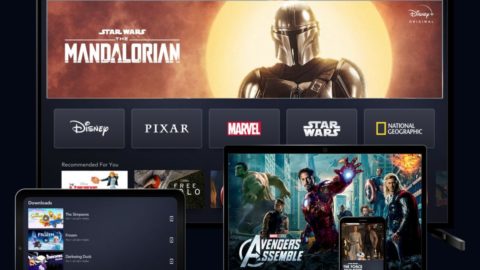Today the new entertainment platform arrives in Italy Disney + : a battleship that brings with it countless historical and classic animation titles together with a wealth of brands such as Pixar, Marvel, Star Wars, National Geographic to which the catalog is added Fox and the hit series The Simpsons. It is a formidable new competitor for the entire national audiovisual world already crowded by the various ones Netflix and Amazon Video. The offer is extremely varied and the market seems to say that there is even more room for everyone right now when, by dramatic coincidence caused by the serious health crisis underway, it forces us to stay more at home and to benefit from greater quantities of audiovisuals in all forms and with every platform. The new Disney offer both for the characteristics of the editorial products it is able to offer, and for the very advantageous cost of access (for the first year at 59 euros, with the possibility of having customizable subtitles, watching the programs in six languages - English, French, Spanish, German, Italian and Dutch – and unlimited downloads) could significantly change the market balance. For the moment, there are no particular reactions from the other direct competitors but there are no doubts that however large the cake may be, the slice that belongs to each one could be reduced.
Speaking of the national audiovisual market, it is important to note that TimVision has reached a multi-year agreement with Disney+ which allows it to become "the most complete platform on the content market in Italy, consolidating its strategy as the main aggregator of premium content on the Italian television scene, in a context in which the convergence between telecommunications and content will play increasingly a key role in the future of the Group, thanks to the development of ultra-broadband and 5G” as recently declared Luigi Gubitosi, Chief Executive Officer of Tim. Therefore, an open war between broadcast operators and broadband which will mainly be played out in the content arena and risks winning whoever will be able to offer "more of everything" as it was once said for the public operator, the Rai. The shift between linear and non-linear television is very subtle and for traditional broadcasters it will be very difficult to compete. The stakes are no longer the "listenings" or the share but rather the time that everyone dedicates during the day in front of a screen, large or small.
Precisely because of the health crisis, the "audience" of television, both digital terrestrial and via satellite, has increased dramatically in recent weeks in each time slot and in the various personal categories. At the same time, the consumption of on-demand products used in a non-linear manner through the widest range of devices has increased: mobile phones, tablets and PCs. In this context, data traffic on the Internet has increased to such an extent as to require an intervention by the European Commissioner for the internal market Thierry Breton to OTT operators to reduce the bit rate, i.e. the transmission speed (consequently, the quality of videos) by about 25%.
So for "viewers" the problem is how to extricate oneself in a complex world full of offers of all kinds in order to be able to create a "personalised" schedule according to one's tastes and preferences. In the previous article we dealt with the weakest segment of the public, children(https://www.firstonline.info/cinema-e-tv-al-tempo-del-coronavirus-i-bambini/ ). This time we are dealing with adults to whom we are offering, starting in the next few days, an "exploration" journey through the different genres and the multiple possibilities of accessing the vastest heritage of cinematographic and television titles, both free and for a fee.





